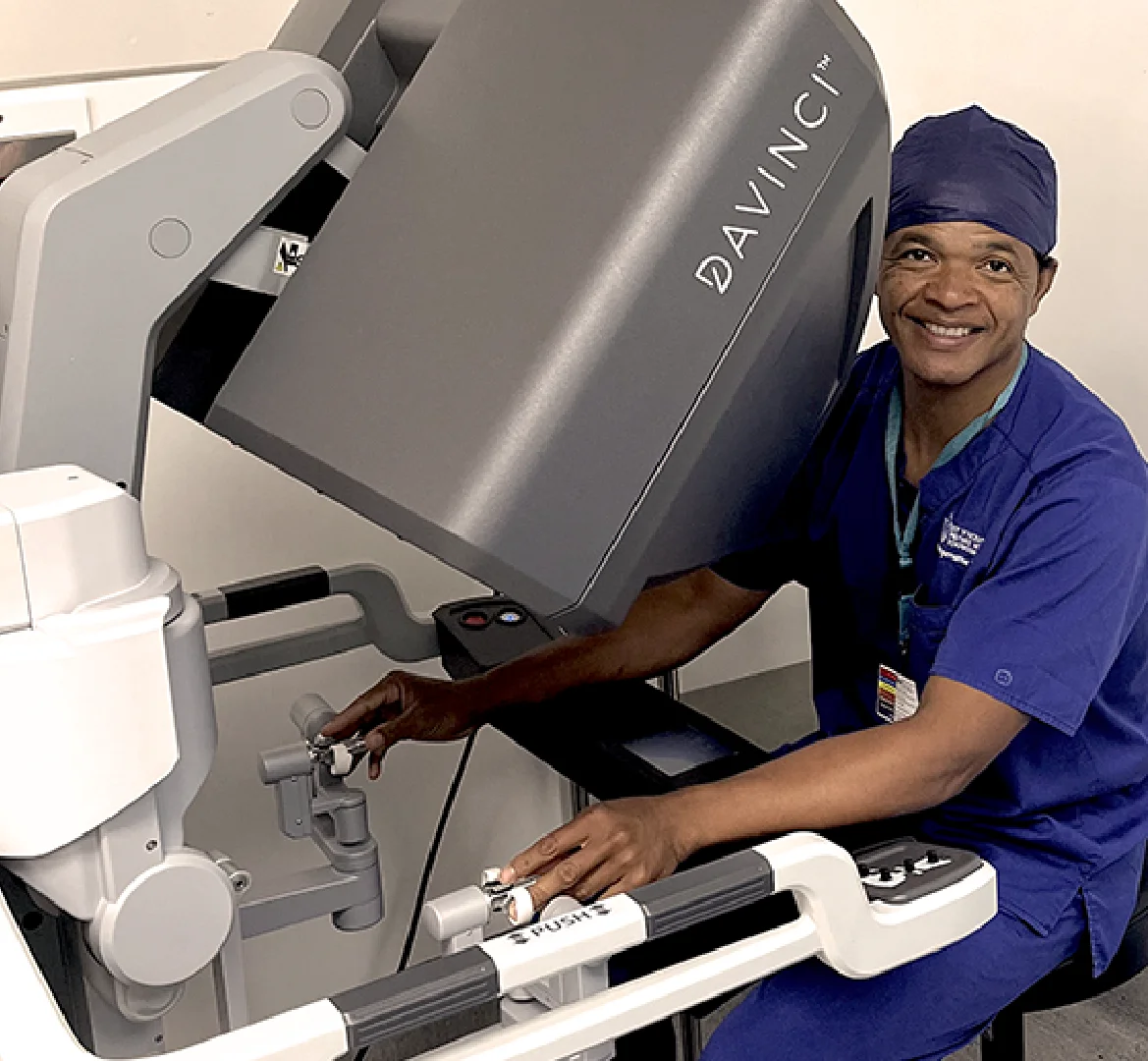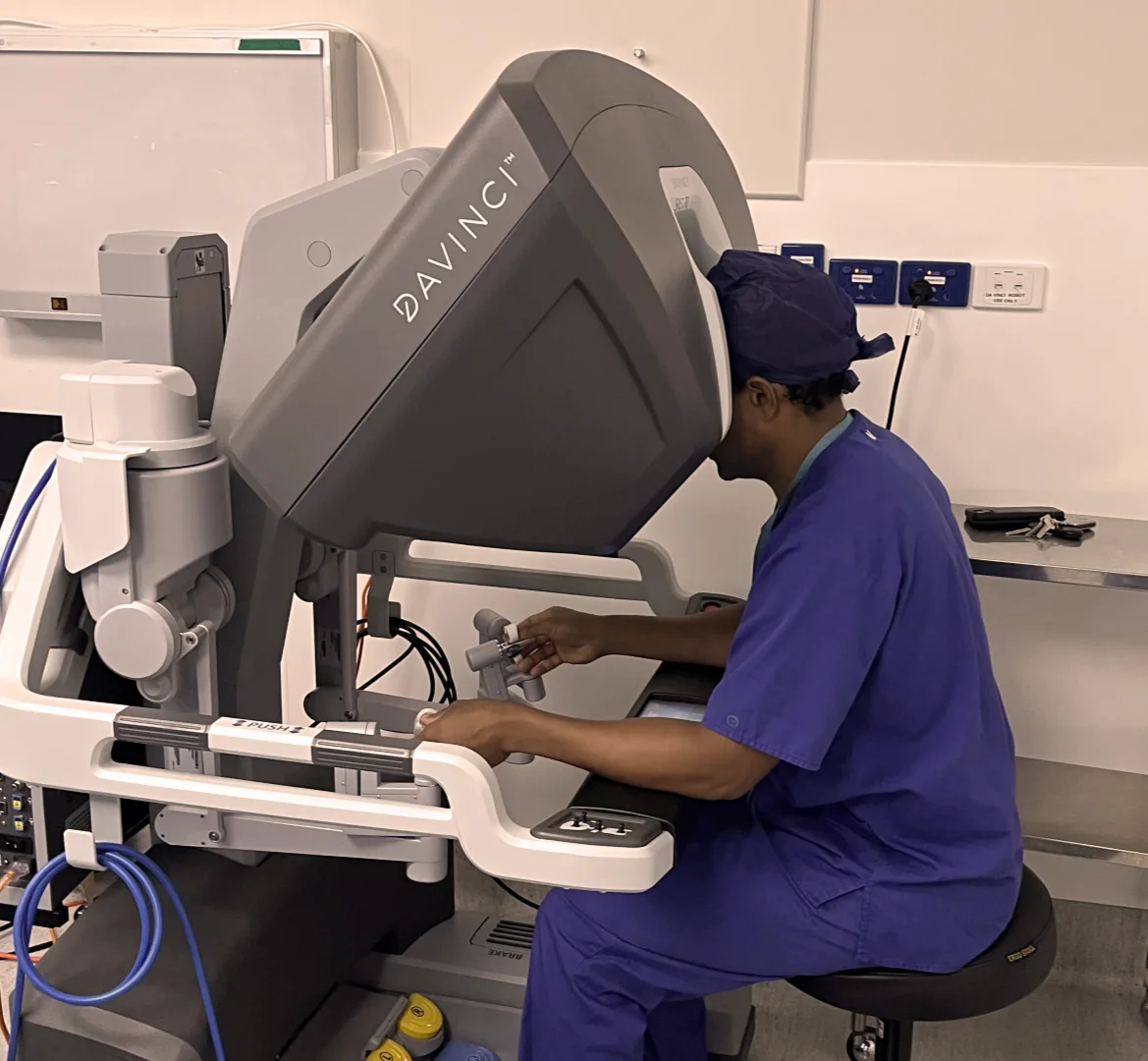Robotic-Assisted Surgery
Robotic-assisted surgery involves the use of robotic systems to aid surgeons in performing minimally invasive procedures with enhanced precision and control. Robotic surgical technology has revolutionised many surgical specialties, offering patients less invasive treatment options with improved outcomes and faster recovery times.
Dr Lanziz Homar now uses the da Vinci surgical systems for gynaecological treatments.

What conditions can it be used for?
At Toowoomba Obstetrics and Gynaecology, we use the da Vinci surgical systems to treat multiple gynaecological issues. Robotic-assisted surgery can be used for:
- Removing endometrial tissue that grows outside the uterus.
- Removing the uterus (hysterectomy) for various conditions, including fibroids, endometriosis, and cancer.
- Removing uterine fibroids while preserving the uterus.
- Removing ovarian cysts while preserving the ovaries.
- Repairing pelvic organ prolapse.
What are the patient benefits?
Undergoing surgery can be a daunting experience for many reasons, but robotic-assisted surgery changes this. Patient benefits include:
- Minimally invasive procedure
- Enhanced precision
- Reduced blood loss
- Shorter hospital stays
- Quicker return to normal activities
- Lower risk of infection
- Less scarring
- Less post-operative pain and discomfort
How does the system work?
The da Vinci surgical system uses three components for optimal minimally invasive surgery.
Surgeon Console
During the operation, the surgeon is in the operating room with you sitting in the surgeon console. The surgeon console features ergonomic hand and foot controls that allow the surgeon to manipulate the robotic arms and instruments. The console provides a high-definition, 3D view of the surgical site through a stereoscopic viewer, allowing the surgeon to see detailed images in real-time that are magnified to 10 times more than what human eyes can see.
The surgeon uses the hand and foot controls to manoeuvre the robotic arms and instruments with precision, mimicking the movements of their hands with greater dexterity. The console also includes controls for adjusting camera settings, such as zoom and focus, to optimise visualisation of the surgical site.
Vision Cart
The vision cart houses the components responsible for providing visualisation during the surgery. It contains the camera system, which consists of high-definition cameras attached to the robotic arms that capture images of the surgical site. The vision cart processes the images captured by the cameras and transmits them to the surgeon console in real-time. It also includes lighting systems and other imaging technologies to enhance visualisation and provide clear, detailed images of the surgical site. The vision cart enables the surgeon to accurately assess and navigate the anatomy during the procedure.
Patient Cart
The patient cart is positioned near the operating table and holds the robotic arms and surgical instruments that are used during the procedure. It consists of four robotic arms, each equipped with specialised surgical instruments. The robotic arms are inserted into the surgical site through small incisions, allowing the surgeon to perform minimally invasive surgery.
The surgeon controls the patient cart from the surgeon console, manipulating the robotic arms and instruments to perform precise surgical manoeuvres.

The TOAG team
The TOAG team care about the health and well-being of their patients. Robotic-assisted surgery offers a minimally invasive and highly beneficial surgical approach to complex procedures with enhanced precision and control, benefiting both patients and surgeons.
